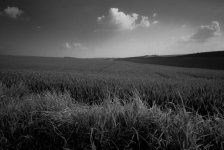napoleonesq
Established
I use lightroom for workflow and its preset B&W seems ok, but some photos on this site taken with M8 appear so much better and more film like than what I can get from lightroom...and I have noticed some use Nik's to accomplish this.
How many of you use Nik's silver efex for B&W workflow for film like look...or any other solutions or plug ins for B&W workflow?
Thanks
How many of you use Nik's silver efex for B&W workflow for film like look...or any other solutions or plug ins for B&W workflow?
Thanks







